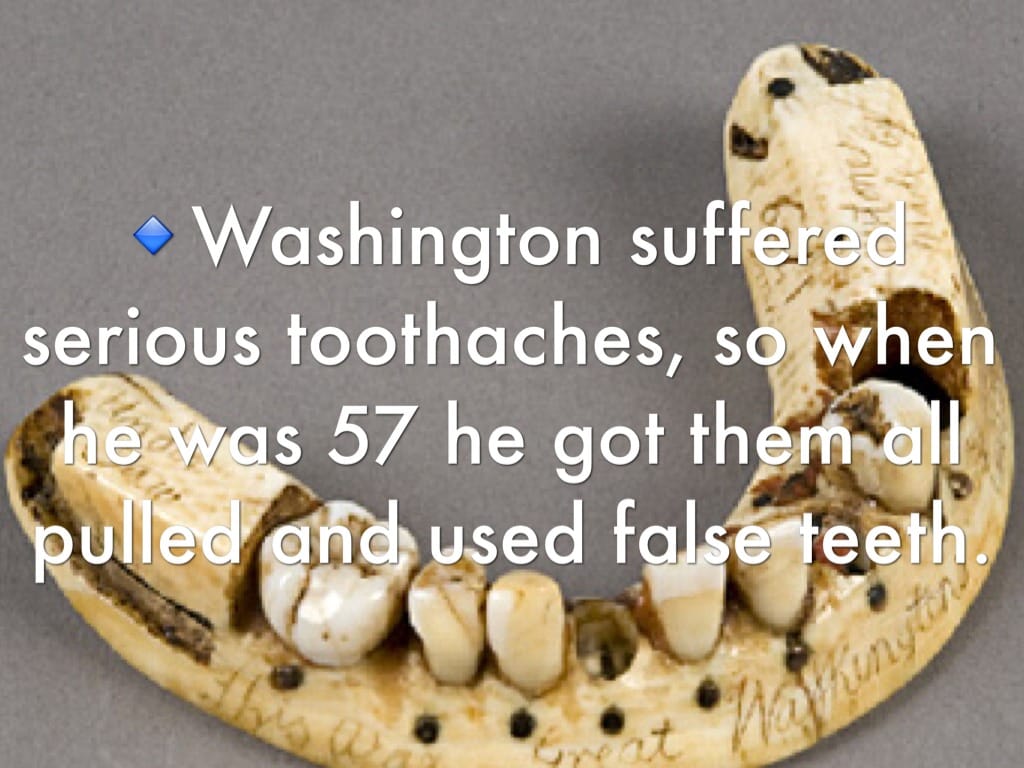The Legend of the Wooden Teeth
We’ve all heard the tales of George Washington, America’s first president, sporting a mouth full of wooden teeth. It’s a story that’s as ingrained in American lore as cherry trees and silver dollars. But is there any truth to it? As with many historical anecdotes, the reality is far more nuanced – and much more fascinating.
Washington’s Dental Dilemmas: A Presidential Pain
The truth is, Washington’s relationship with his teeth was, to put it mildly, complicated. From his early twenties onward, he suffered from persistent dental problems, likely due to a combination of factors common in the 18th century: limited dental hygiene, a diet rich in sugar (a luxury at the time), and the rudimentary state of dentistry.
Washington’s diaries and letters offer glimpses into his dental woes, painting a picture of frequent discomfort and even agony. Imagine the stoic general, leading his troops through the Revolutionary War, all while battling a throbbing toothache!
Beyond Wood: The Surprising Materials of Washington’s Dentures
While wood never graced Washington’s mouth, his dentures were far from ordinary. Crafted by skilled artisans, they were a testament to the ingenuity – and, at times, the unsettling practices – of 18th-century dentistry.
Here’s a breakdown of the materials that went into those presidential chompers:
- Ivory: Hippopotamus and walrus ivory were prized for their durability and resemblance to natural teeth.
- Gold: This precious metal added a touch of elegance and served practical purposes, forming clasps, springs, and other mechanisms.
- Lead: Believe it or not, lead, easily molded and shaped, formed the base and plates of many dentures during this era.
- Human Teeth: This is where Washington’s dental history takes a grim turn. Historical evidence, including Washington’s own records, suggests that some of his dentures contained teeth extracted from enslaved people, a practice that casts a dark shadow over the era’s ethical landscape.
The Roots of a Myth: Why Wooden Teeth?
If Washington never sported wooden teeth, how did this enduring myth take hold? Several factors likely contributed:
- Discoloration: Ivory, once a pristine white, tends to darken and yellow with age, taking on a brownish hue that could resemble wood, especially to the untrained eye.
- Popular Imagination: The image of a stately president with a mouthful of wooden teeth, while inaccurate, has a certain folksy charm that aligns with the era’s rustic image.
- The Power of Storytelling: Myths and legends often arise from a kernel of truth, embellished and exaggerated over time. Washington’s well-documented dental problems provided fertile ground for such tales to sprout.
More Than Just Teeth: A Window into History
The story of Washington’s teeth, far from being a mere historical footnote, offers a captivating glimpse into the medical practices, social norms, and ethical complexities of his time. It reminds us that even the most iconic figures grappled with everyday ailments and that the quest for a healthy smile has a long and often surprising history.
Next time you encounter the tale of Washington’s wooden teeth, remember the truth behind the myth. It’s a tale that speaks volumes about the evolution of dentistry, the power of storytelling, and the importance of examining history with a critical eye.
- Unlocking Francis Alexander Shields’ Finance Empire: A Comprehensive Biography - July 12, 2025
- Unveiling Francis Alexander Shields: A Business Legacy - July 12, 2025
- Francis Alexander Shields’ Business Career: A Comprehensive Overview - July 12, 2025















